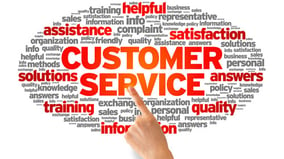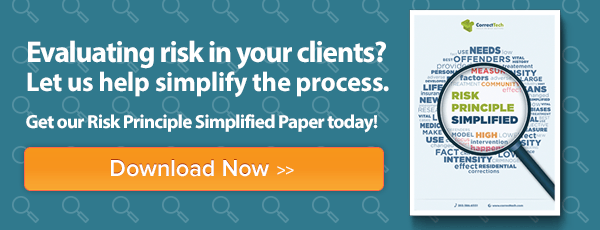Subscribe to our blog and get all of our blog posts delivered right to your inbox.
Good Enough or.... Excellent
What makes a poor customer service experience stand out? It is easy to think of that inattentive waiter, being forced to listen to terrible hold music for an hour, or even a cashier that was rude for no reason at all. But what about all of the times you experienced excellent customer service? What made the experience go from good to great? Was it an employee going out of their way to accommodate you? Maybe someone  following up with you multiple times? Or was it as simple as someone that seemed to genuinely care if you had everything you needed.
following up with you multiple times? Or was it as simple as someone that seemed to genuinely care if you had everything you needed.
These scenarios all have something in common: they involved someone making you, the customer, a priority. As often as we experience customer service during our daily lives at restaurants, banks and grocery stores, it is easy to forget how often we provide customer service in other areas of our life. When you think of the last few times you provided customer service was it excellent, pretty good, or just good enough? Did you go the extra mile or even the extra foot? Did you leave your customer feeling as though you truly cared and they were a priority or did you go through the motions? Providing excellent customer service when working with offenders can be especially difficult. The drudgery of paperwork and many compliance tasks along with the sheer volume of clients most criminal justice employees interact with daily can be a recipe for “poor” customer service experiences.
Every Interaction Counts
When I worked as a Security Officer for Time to Change Community Corrections, something a supervisor said always stuck with me, “Approach every interaction with clients from a Customer Service mindset. We are here to do everything we can to help every client be as successful as possible”. This thought process was one that came easy to me. Before I worked for Time to Change, I worked various retail sales jobs and always enjoyed working with, and for, other people. It felt great to encounter a frustrated customer and have them leaving the store knowing their issue was heard, resolved, and will be followed up on to prevent any future hiccups. I always enjoyed, and still do, the challenges that come with figuring out a difficult problem. Examining the issue, seeking advice from peers, researching solutions, and trying new methods.
When I started working in community corrections, I was often able to draw from these past customer service experiences. However, working with offenders in community corrections is different than dealing with an irate customer. I was not able to tell the irate customer to come back in an hour when they cooled off. I also never had to talk with a retail customer about how their poor decisions would affect their family and loved ones. Offenders can make us feel extremely frustrated and it is easy to forget what we are there to do: help them succeed.
As a security officer, we encounter clients when they first wake up in the morning (cranky), when they find out they are at risk of regression (upset), or when they have had a frustrating day and just want their dinner tray (NOW!). As a case manager, clients would be late to meetings, forget homework assignments, and fail to be prepared for their meetings. All of the above situations offer a chance for either poor customer service or excellent customer service. Trust me, I am not here to cast the first stone. I have failed and provided poor customer service in these situations. Luckily, I also was able to learn from them and be prepared to provide excellent customer service the next time.
Meeting Crankiness with Kindness
Remember to meet crankiness with kindness, inform clients in trouble when they will be able to meet with administration, and make it a point to grab late returning clients their dinner before the dining area is closed. I often saw case managers staying late before a long weekend to make sure all of their clients had the passes they needed. I often witnessed security staff spending slow times at the desk helping new clients research and plan their upcoming stressful job search week. I also observed security staff collecting and organizing job search clothing form local dry cleaners, printing maps of downtown Denver, and reviewing client resumes. These individuals were making the client feel as if they were a priority. They were going above and beyond for them. As one of my favorite sayings goes, “good is the enemy of great.” It is not difficult for someone to not only avoid giving bad customer service but also to turn good enough customer service into excellent customer service. Just think how you would expect and like to be treated.
Although these may seem like mundane, trivial tasks, they tend to be the things that make the biggest difference with an offender. In my experience, it can be the little things that matter the most. You never know what might be the thing that helps an offender turn the corner in the program. Going the extra mile allows us to show that we really care about our clients completing their case plans and program successfully and that we are willing and ready to help them do so.
What does excellent customer service look like where you work?
Subscribe to our blog and get our future posts delivered right to your inbox.



